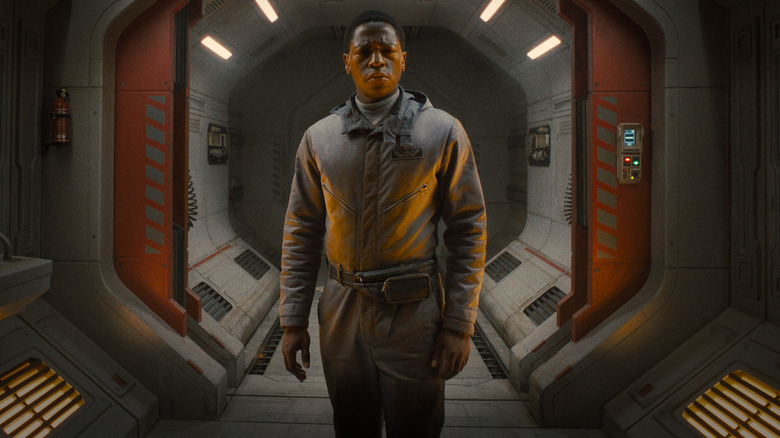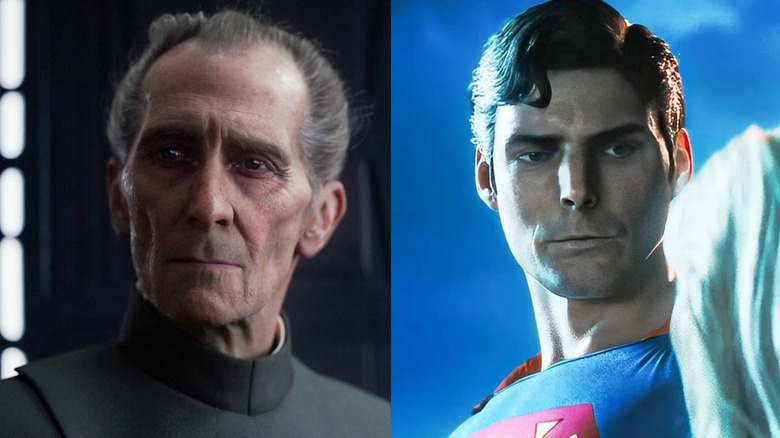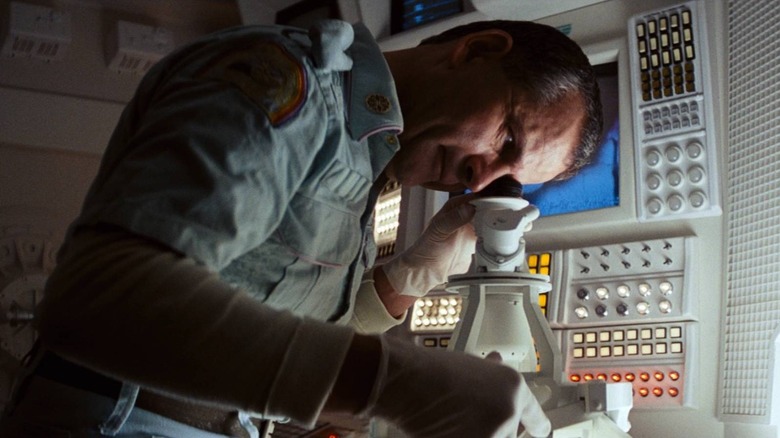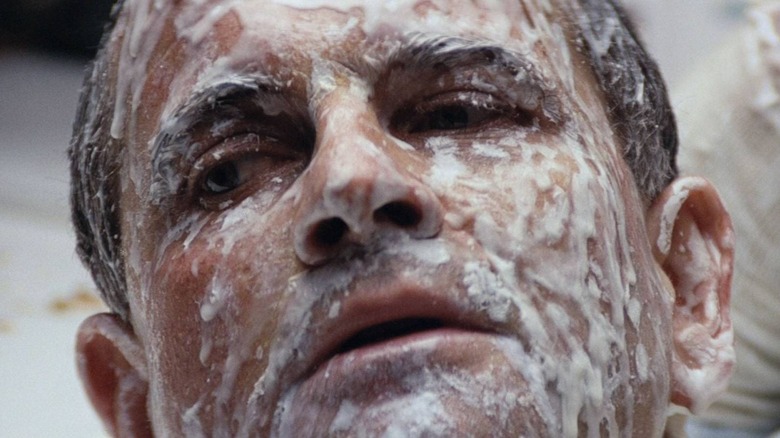It's Time For Us To Talk About That Alien: Romulus Cameo
Contains spoilers for "Alien: Romulus"
Judging by the chest-burstingly good reviews, it's clear director Fede Álvarez's "Alien: Romulus" has proved to be worthy of its spot in the "Alien" movie saga. However, even with tension that's as tight as a facehugger's grip and the gut-churning horror that comes with it, there's one major plot point and surprise appearance of a legendary "Alien" cast member that will turn your stomach more than any xenomorph could.
Upon sneaking aboard Remus to get the gear they need, Rain (Cailee Spaeny) and crew come across Rook, a decimated Hyperdyne Systems 120-A/2 android that's fallen victim to whatever chaos erupted before our heroes arrived. Die-hard fans need only see the blue button down uniform and white undershirt to know that this is the same model as the treacherous Ash (Ian Holm), the android that tried to kill Ripley (Sigourney Weaver) and return the cargo to "the company" in the original 1979 film.
While understandable to a point, the inclusion of this duplicitous crew member (they always were a bit twitchy) creates a minefield that Álvarez dares to tread through. And since Holm died in 2020, it leads to yet another deep fake of a deceased actor. In this instance, it's not as bad as some might make it out to be, but it's not good, either. "Romulus," as great as it is, echoes the same issues as another franchise from not very long ago, in a galaxy this franchise should stay far, far away from, as well as one of the biggest comic book movie bombs in history.
Alien adds insult to artificial injury just like the Star Wars movies and The Flash
Much in the way that "Alien" followed "Star Wars" in creating a groundbreaking sci-fi universe, so too has the franchise replicated the problems that come with spending far too long with either de-aged or dead cast members from previous films. Peter Cushing, Carrie Fisher, and Mark Hamill were all "Star Wars" legends that got the CGI treatment in recent movies. And even though it could be argued the technology has improved since they "returned" to the saga, the inclusion of George Reeves, Christopher Reeve, and Helen Slater as Supermen and Supergirl in "The Flash" proved the code to properly using it still hadn't been cracked.
For every shot where "Romulus" almost gets Ian Holm right, it takes only a matter of seconds before it's putting a damper on the tension that the film delivers so well everywhere else. The longer we look at Rook, the hokier he appears. There are simply not enough instances where it truly looks like Holm's iconic performance is being reprised on screen.
The most frustrating thing about all of this, however, is that the film has all the tools required to perfect this not-so-magic trick Hollywood continues to try, but uses none of them the way it should. Instead of keeping the focus on Rook, "Alien: Romulus" could've simply looked to what worked best in the previous "Alien" films — keep its audience in the dark as much as possible, and its main focus even more so.
Rook didn't have to be that much of a close encounter
Things get off to a promising start with Rook's introduction. Discovered face-down in a familiar milky white fluid with exposed noodles from his torso, the crew lifts him up to reveal Ian Holm's unmistakable side profile steeped in shadow, confirming what model of android we're about to meet. That, ultimately, is as much as we should've seen of him, and there'd be a total logical reason behind it. In a film that spends most of its time in darkness with only hazard lights lighting up cramped rooms or the glow of outer space filling up long corridors, there's no reason that Rook couldn't have been kept more out of sight. Perhaps that would have made the android into an even more impactful presence.
The room where they meet the backstabbing synthetic could've been lit by emergency lighting, flashing on Rook's face just like when Ripley put the Nostromo into self-destruct mode in the original film. Not only would it have actually been more respectful of the late actor, but it would've sent the audience's stress levels up a notch and kept them there. While he was at it, Fede Álvarez could've also turned the static up higher on the monitors when Rook tried to talk with the would-be burglars, flickering in and out so as not to keep a steady light on the android. As it was shot, it feels like fan service gone too far. It's especially distracting in a film that prides itself on another approach that could've helped here — practical effects.
A more broken Rook could've worked so much better
"Alien" history dictates that most Weyland Yutani synthetics can take a licking and keep on ticking. Even after the likes of David (Michael Fassbender), Ash, and Bishop (Lance Henriksen) have been torn apart, they're still a little bit functional. With that in mind, could the Romulus android have taken a bit more of a pounding to the point where Rook's face only partly resembled Holm's horrifying science officer? If half of Rook's face, or even half his head, was missing, the camera could've stayed on the android for as long or as little as necessary while still making the nostalgic nod the film was clearly aiming for. It could also have permitted for even more modulation on Rook's voice, which only occasionally captures Holm's unmistakable English drawl.
Ultimately, it's clear that while some might see this as unnecessary pandering to the franchise and a horrific homage to what came before, Rook's presence really does feel like a necessary evil. Not only does he help set the stage for what the movie's clueless space invaders are up against, but it binds this "inbetweequel" even more tightly to "Alien" in a way that "Prometheus" and "Alien Covenant" struggled to do. Throwing the wrecked android into the film's mix really is a logical and essential story beat, but it's one that ultimately ends up feeling more hollow than it should. Just like Ash, Álvarez has our sympathies.



